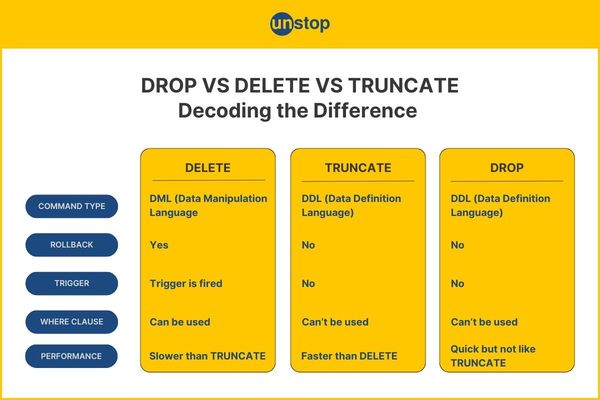SQL Lesson 15 - Deleting rows
When you need to delete data from a table in the database, you can use a DELETE statement, which describes the table to act on, and the rows of the table to delete through the WHERE clause.
Delete statement with condition
DELETE FROM mytable WHERE condition;
If you decide to leave out the WHERE constraint, then all rows are removed, which is a quick and easy way to clear out a table completely (if intentional).

Taking extra care
Like the UPDATE statement from last lesson, it's recommended that you run the constraint in a SELECT query first to ensure that you are removing the right rows. Without a proper backup or test database, it is downright easy to irrevocably remove data, so always read your DELETE statements twice and execute once.
Exercise
The database needs to be cleaned up a little bit, so try and delete a few rows in the tasks below.
1. This database is getting too big, lets remove all movies that were released **before** 2005.
1. DELETE FROM movies WHERE Year < 2005;
2. Andrew Stanton has also left the studio, so please remove all movies directed by him.
1. DELETE FROM movies WHERE Director = 'Andrew Stanton';
Exercise 15 — Tasks
1. This database is getting too big, lets remove all movies that were released **before** 2005. ✓
2. Andrew Stanton has also left the studio, so please remove all movies directed by him. ✓
The webpage is a lesson from SQLBolt on how to delete rows from a database using SQL. It covers:
-
The
DELETEstatement syntax:DELETE FROM mytable WHERE condition;You can use a condition to specify which rows to delete from a table. If you leave out the
WHEREclause, all rows in the table will be deleted. -
Caution advised:
Always run aSELECTquery with your conditions first to ensure you are deleting the correct rows. There is a risk of accidentally and permanently removing important data if you're not careful. -
Exercises:
The lesson provides a sampleMoviestable and gives practical tasks:- Delete all movies released before 2005.
- Delete all movies directed by Andrew Stanton.
The page strongly emphasizes double-checking your DELETE statements before executing them, since deleted data may be lost without a backup.